ReignofRage's Camponotus spp. Journal (Discontinued)
Here you will find most of the Camponotus I keep, as I gain and lose species I will edit the species list.
Past species:
Camponotus anthrax
Edited by ReignofRage, August 5 2022 - 2:12 PM.

ReignofRage's Camponotus spp. Journal (Discontinued)
Here you will find most of the Camponotus I keep, as I gain and lose species I will edit the species list.
Past species:
Camponotus anthrax
Edited by ReignofRage, August 5 2022 - 2:12 PM.
I think its an undescribed species personally. It does not seem to fit the bill for anything very well. Congratulations on doing well with them. Getting majors would help considerably with an ID.
Hi there! I went on a 6 month or so hiatus, in part due, and in part cause of the death of my colonies.
However, I went back to the Sierras, and restarted my collection, which is now as follows:
Aphaenogaster uinta, Camponotus vicinus, Camponotus modoc, Formica cf. aserva, Formica cf. micropthalma, Formica cf. manni, Formica subpolita, Formica cf. subaenescens, Lasius americanus, Manica invidia, Pogonomyrmex salinus, Pogonomyrmex sp. 1, Solenopsis validiuscula, & Solenopsis sp. 3 (new Sierra variant).
That would be very cool if it is an undescribed species. I plan to keep this colony until it dies, so majors will hopefully happen eventually! This queen, based on the only non-identifyable Camponotus species in the area, should get big ~20mm majors that are on par with C. us-ca02.
Camponotus spp. update 7.viii.2021
C. essigi - There is a bigger cocoon, it's probably just a more full-sized worker.
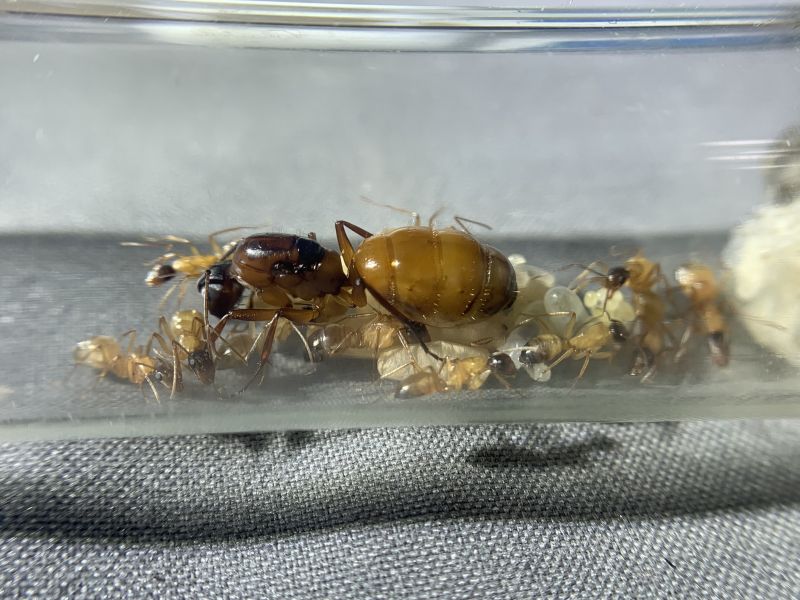
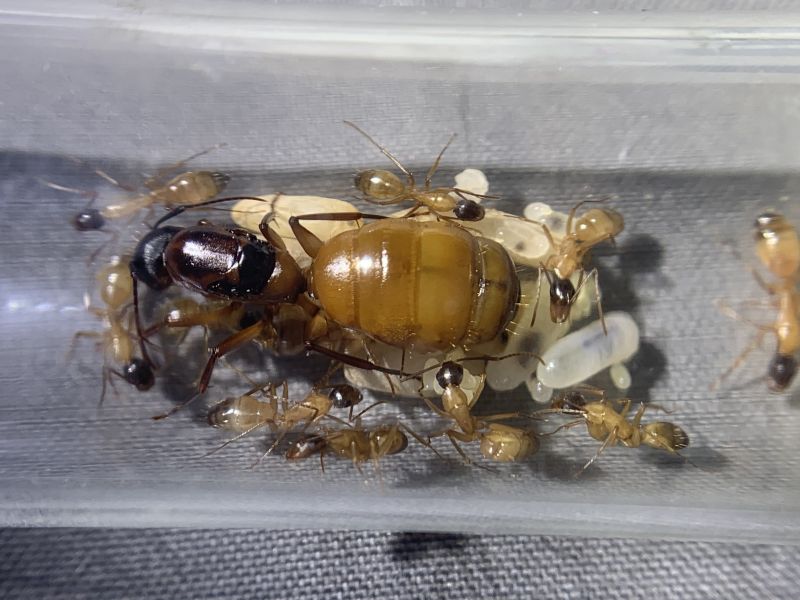
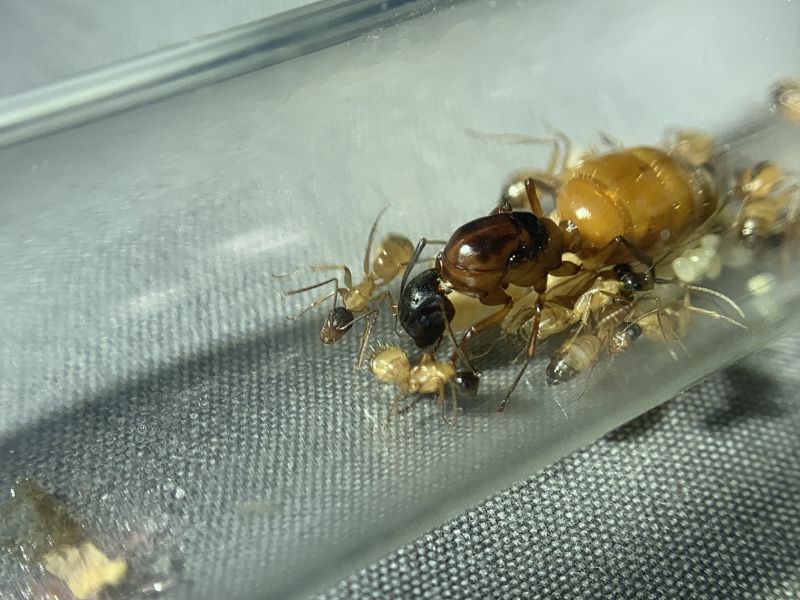
C. sp. - They now are up to eleven workers! After all the cocoons they have open I plan to move them into a tub and tubes setup.
C. sayi - I gave them to a friend in trade for some other species.
Edited by ReignofRage, September 28 2021 - 6:08 PM.
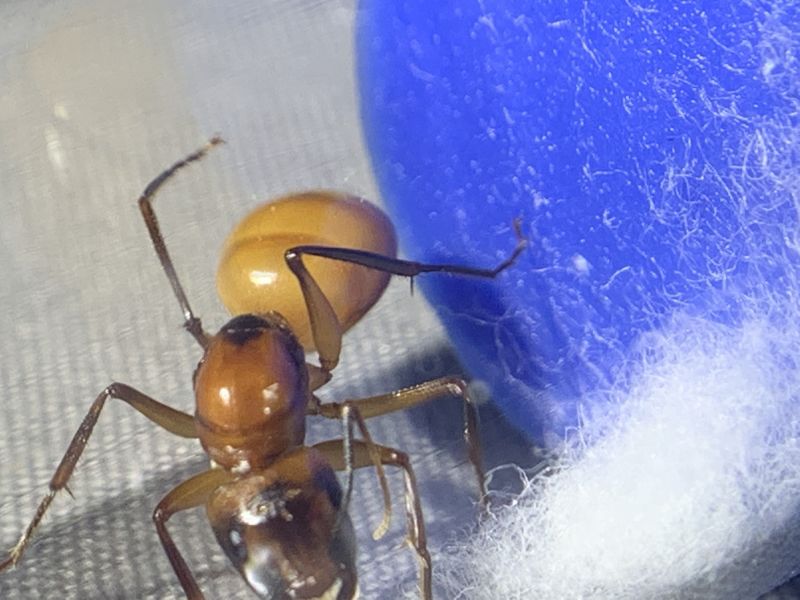
I caught this pretty C. ocreatus recently! I can't wait to grow this colony out.
For the other species I have. The C. essigi had a big die off and dropped to only six workers. I haven't quite figured out what made them die; I want to say it was the mealworm I gave them, but the other colonies that also had the same mealworm (it was cut up) showed no effect. The unidentifiable Camponotus species i have is doing amazing! it is now up to 14 workers and has an absolute ton of brood.
Update Update 13.viii.2021
C. essigi - So, as previously mentioned this colony had a random die off. There is only six workers as shown and some brood, I think the larger cocoon may be a median.
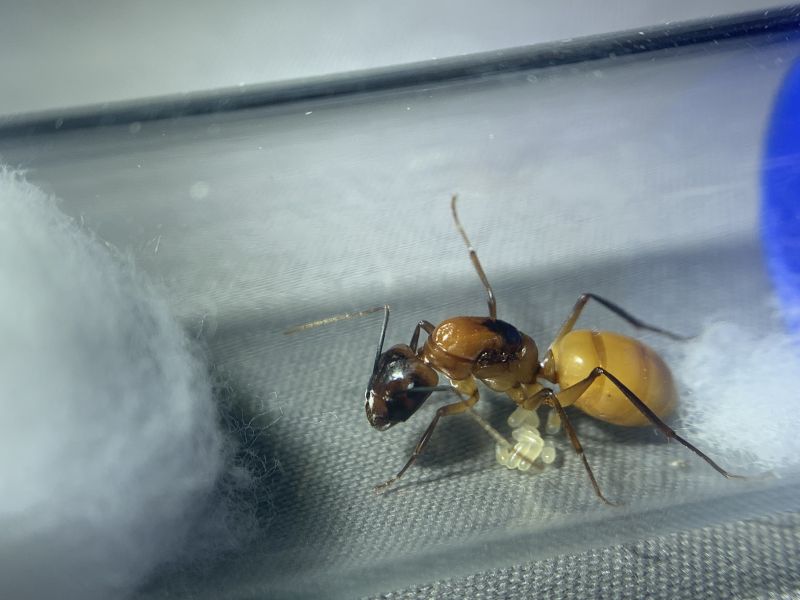
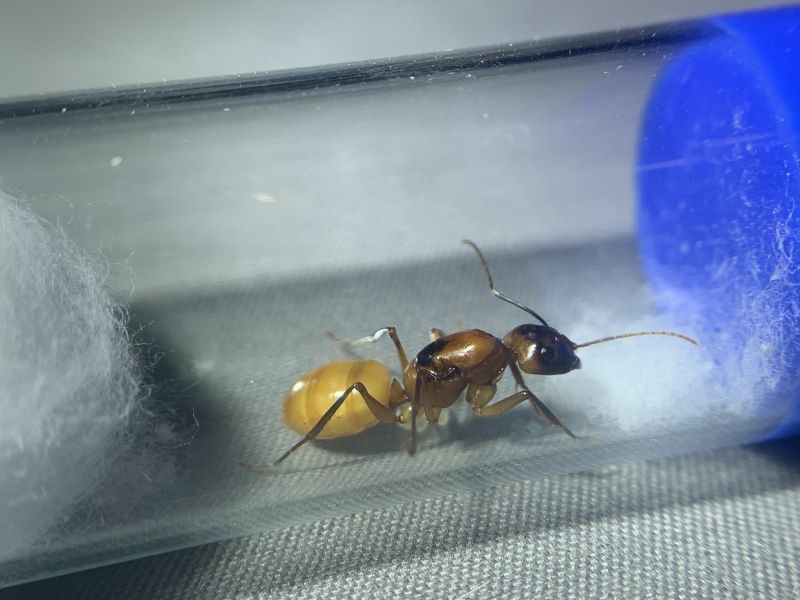
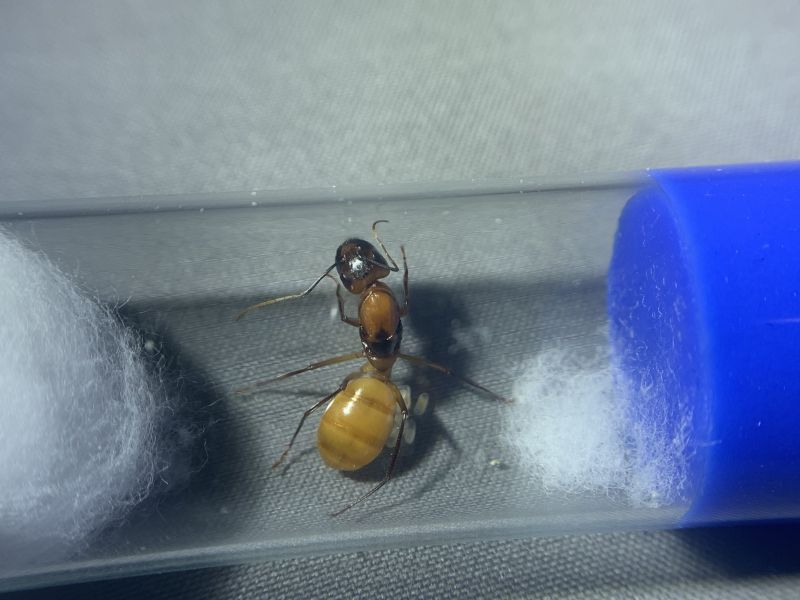
C. ocreatus - This queen already has nine eggs, I don't really expect more.
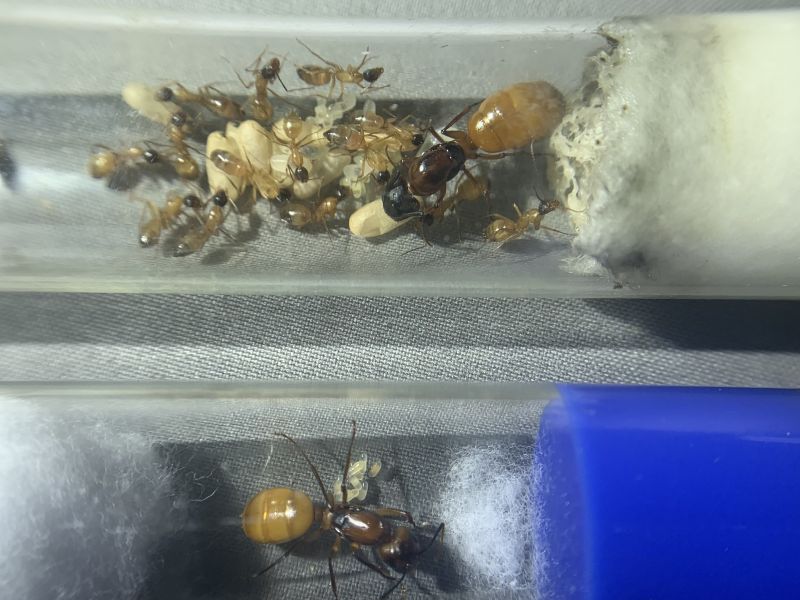
C. sp. - I took the picture with the C. ocreatus as a size comparison to show how large the queen is. Besides that, they are up to 14 workers and a lot of their eggs are now hatching into larvae. I am going to move them into a tubs and tubes setup soon so that I can give them 24/7 access to sugars.
Edited by ReignofRage, September 28 2021 - 6:08 PM.
Noice. Can’t wait for ocreatus workers and the majors of the unidentifiable Camponotus
Update 24.viii.2021
C. essigi - Finally! A new caste as appeared, this colony's first median. I was surprised they made one in their second generation.
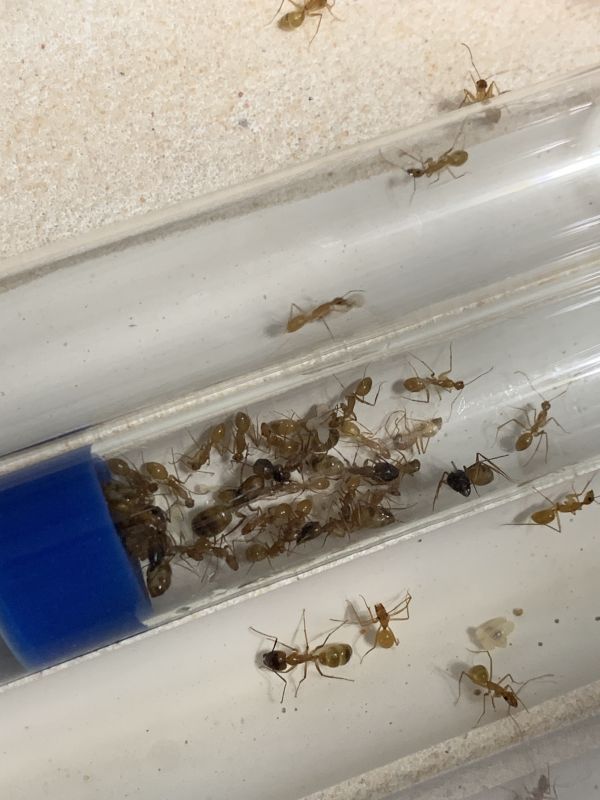
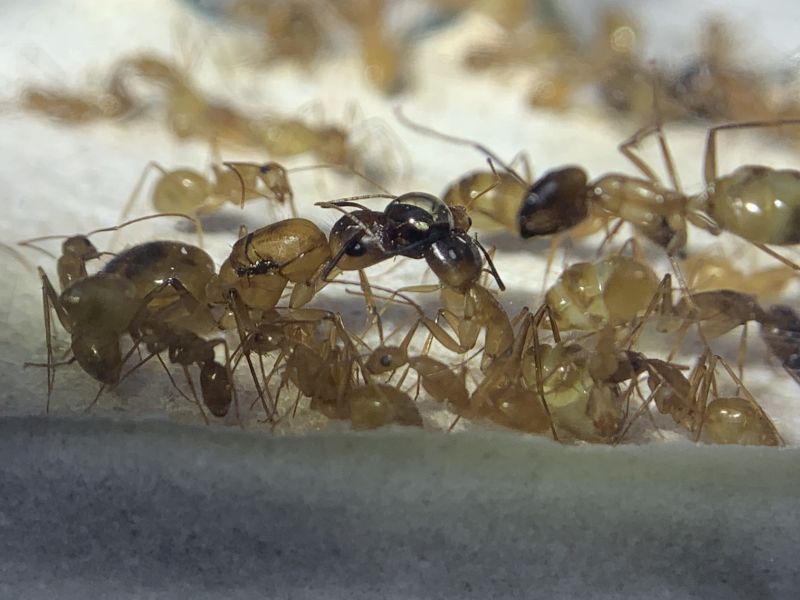
C. festinatus - This colony is around 40 workers, I'm very excited to grow it out.
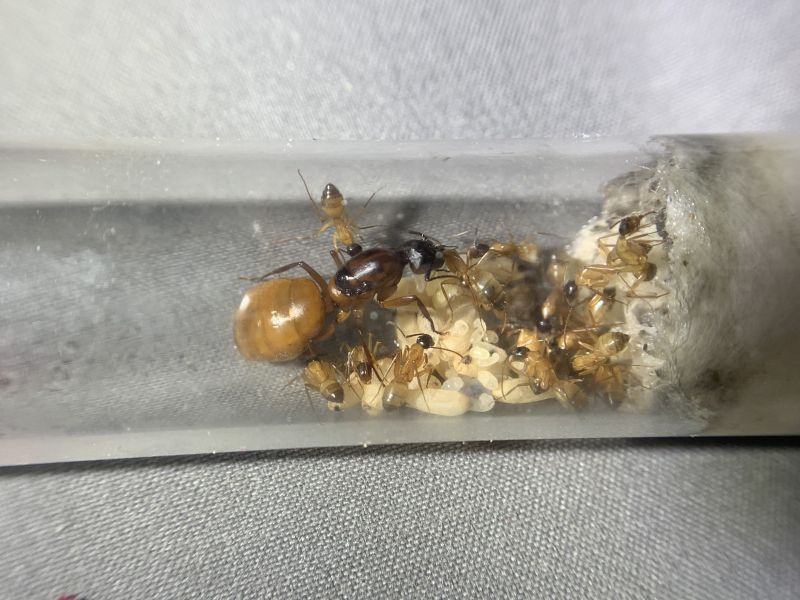
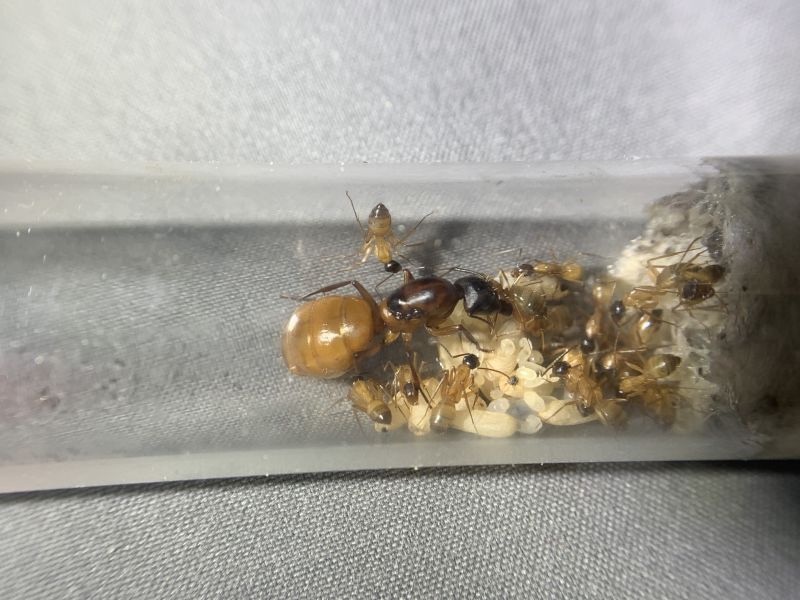
C. sp. - This colony lost two workers so it is now only at 16 - 17 workers. I've been feeding a lot of protein in hopes of getting a median before diapause.
Edited by ReignofRage, September 28 2021 - 6:08 PM.
Update 24.ix.2021
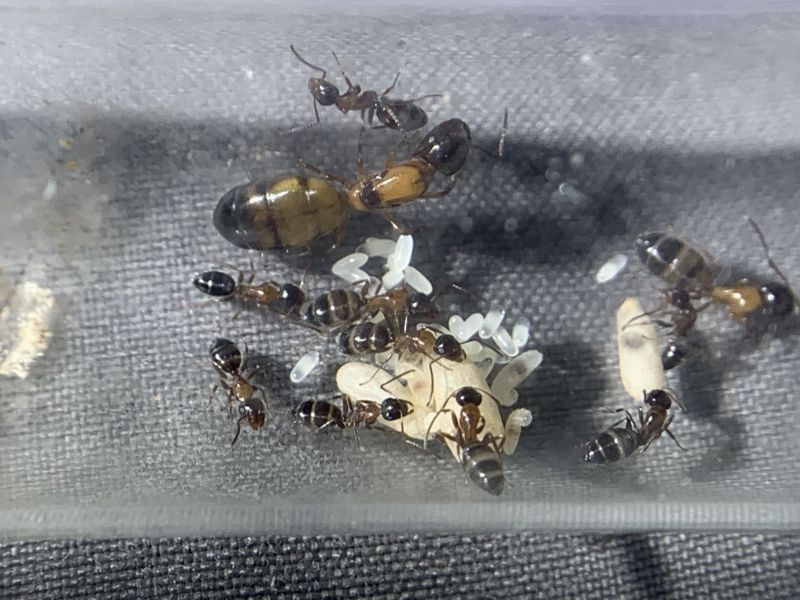
C. essigi - At ten workers with a decent brood pile (most if not all the eggs in the picture are now larvae). There is also another median caste pupa.
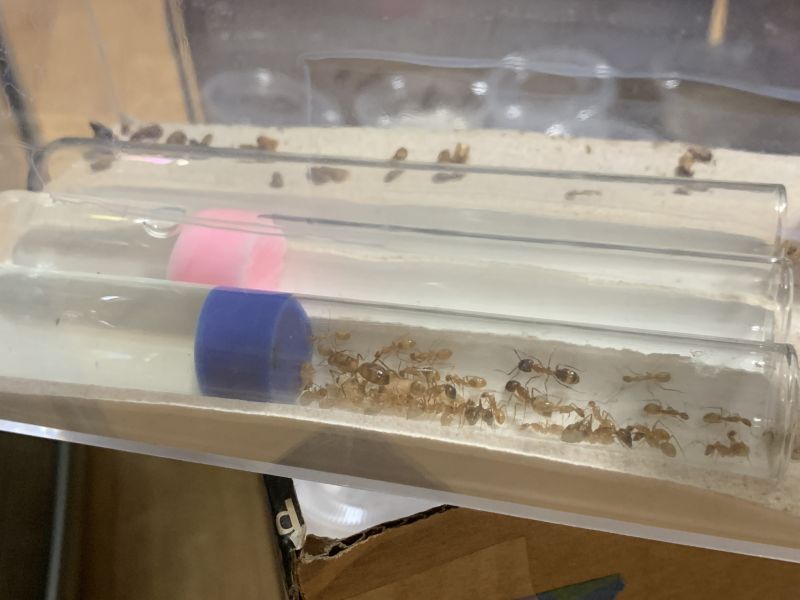
C. festinatus - This colony has about 25-30 brood consisting of all larvae and pupae now. I like this species a lot, from their slight orange coloring to the almost black faces on the majors.
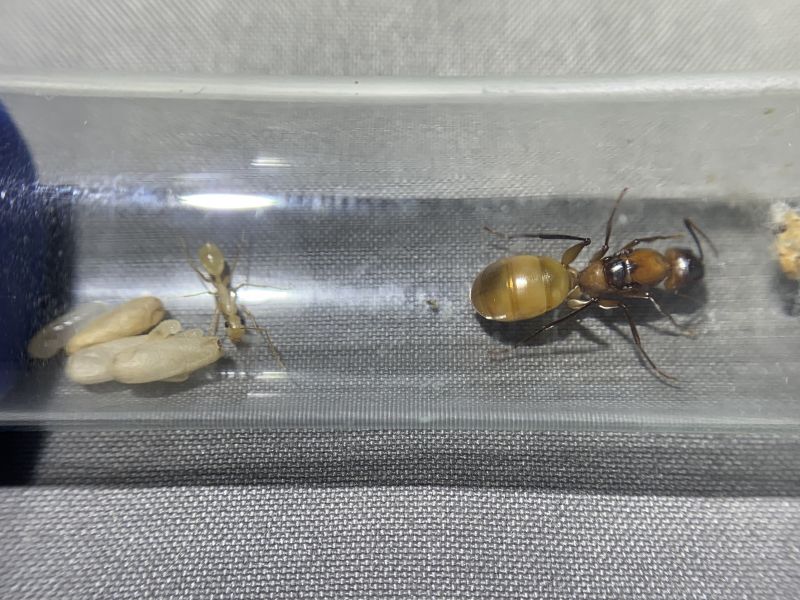
C. ocreatus - Here is a picture of the first nanitic. If anyone is wondering why the brood ranges so much in size, it would be due to me having to keep this founding colony at only 80 degrees Fahrenheit until I got a second incubator.
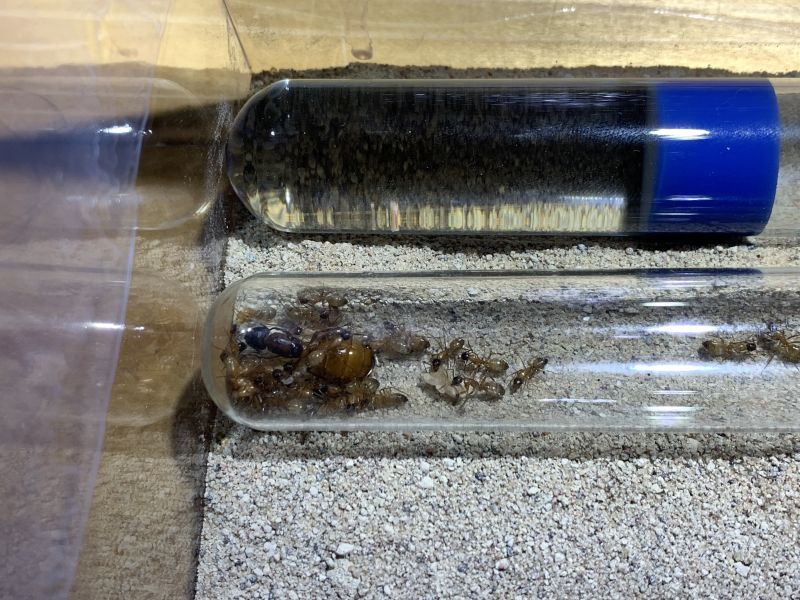
C. sp - Finally hit the 30 worker mark ![]() . As to why they are in the dry tube, I do not know why. This colony seems to move back and forth from the test tube with water to the empty tube every couple weeks for no reason.
. As to why they are in the dry tube, I do not know why. This colony seems to move back and forth from the test tube with water to the empty tube every couple weeks for no reason.
The reason is Myrmy’s Law.
Update 24.ix.2021
C. essigi - At ten workers with a decent brood pile (most if not all the eggs in the picture are now larvae). There is also another median caste pupa.
C. festinatus - This colony has about 25-30 brood consisting of all larvae and pupae now. I like this species a lot, from their slight orange coloring to the almost black faces on the majors.
C. ocreatus - Here is a picture of the first nanitic. If anyone is wondering why the brood ranges so much in size, it would be due to me having to keep this founding colony at only 80 degrees Fahrenheit until I got a second incubator.
C. sp - Finally hit the 30 worker mark. As to why they are in the dry tube, I do not know why. This colony seems to move back and forth from the test tube with water to the empty tube every couple weeks for no reason.
I have a new species to add to this journal, C. yogi! I caught a handful of these and yes, they are all C. yogi. I'll attach an image of one of the queens' head.
Nice!!
1X Pogonomyrmex occidentalis 40-50 Workers
1X Solenopsis molesta 10 Workers (mono)
Ants I Want: Crematogaster sp, Camponotus Sp., Ponera Pennsylvanica, Mymercocystus sp.
My Youtube channel: https://www.youtube....kUjx-dPFMyVqOLw
Join Our Fledgling Discord Server https://discord.com/...089056687423489
May I ask where these were found in such abundance?
Hopefully these do well. We need more major pics of these on the forum.
Hi there! I went on a 6 month or so hiatus, in part due, and in part cause of the death of my colonies.
However, I went back to the Sierras, and restarted my collection, which is now as follows:
Aphaenogaster uinta, Camponotus vicinus, Camponotus modoc, Formica cf. aserva, Formica cf. micropthalma, Formica cf. manni, Formica subpolita, Formica cf. subaenescens, Lasius americanus, Manica invidia, Pogonomyrmex salinus, Pogonomyrmex sp. 1, Solenopsis validiuscula, & Solenopsis sp. 3 (new Sierra variant).
May I ask where these were found in such abundance?
Hopefully these do well. We need more major pics of these on the forum.
Angeles Forest is where I found them.
Does anyone know if they're polygynous? I'm assuming not, seeing as only very few have been caught. If you caught more than one do an experiment??? Seems interesting but is quite risky...
I want to defintiely try it if I find more, but I will most likely have to wait until next year to try that.
The C. festinatus had a male enclose today. C. essigi also has had a major enclose within the past week.
Market Place →
General Market Place →
Looking for bulk camponotus floridanusStarted by AntsExpo , Jul 24 2023 |
|

|
||
Market Place →
General Market Place →
Trying to buy camponotus floridanus PM me.Started by AntsExpo , Jun 6 2023 |
|
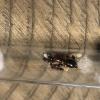
|
||
Ant Keeping →
Ant Keeping Journals →
AntsCali's Camponotus CA02 journalStarted by AntsCali098 , Aug 13 2022 |
|
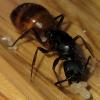
|
||
Ant Keeping →
General Ant Keeping →
Camponotus Reaching MaturityStarted by ReignofRage , Jul 13 2021 |
|

|
||
Ants & Myrmecology →
General →
Camponotus wettereri in the USStarted by ReignofRage , May 17 2021 |
|

|
0 members, 1 guests, 0 anonymous users